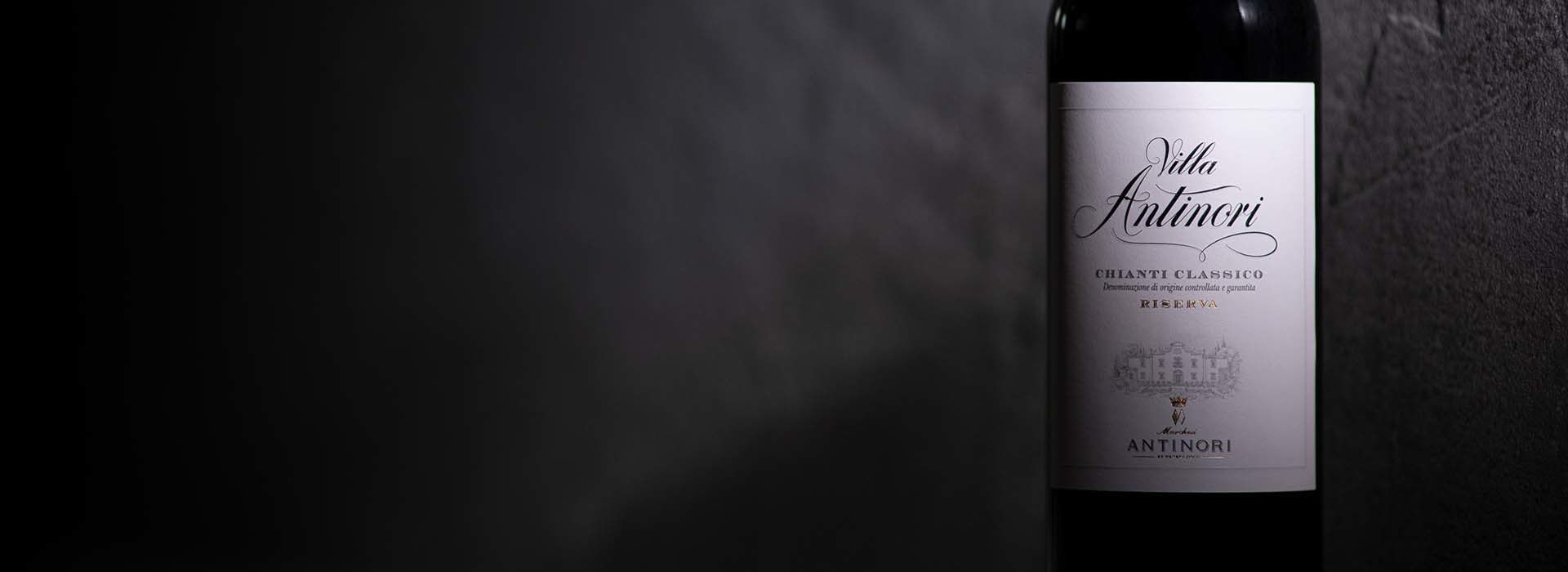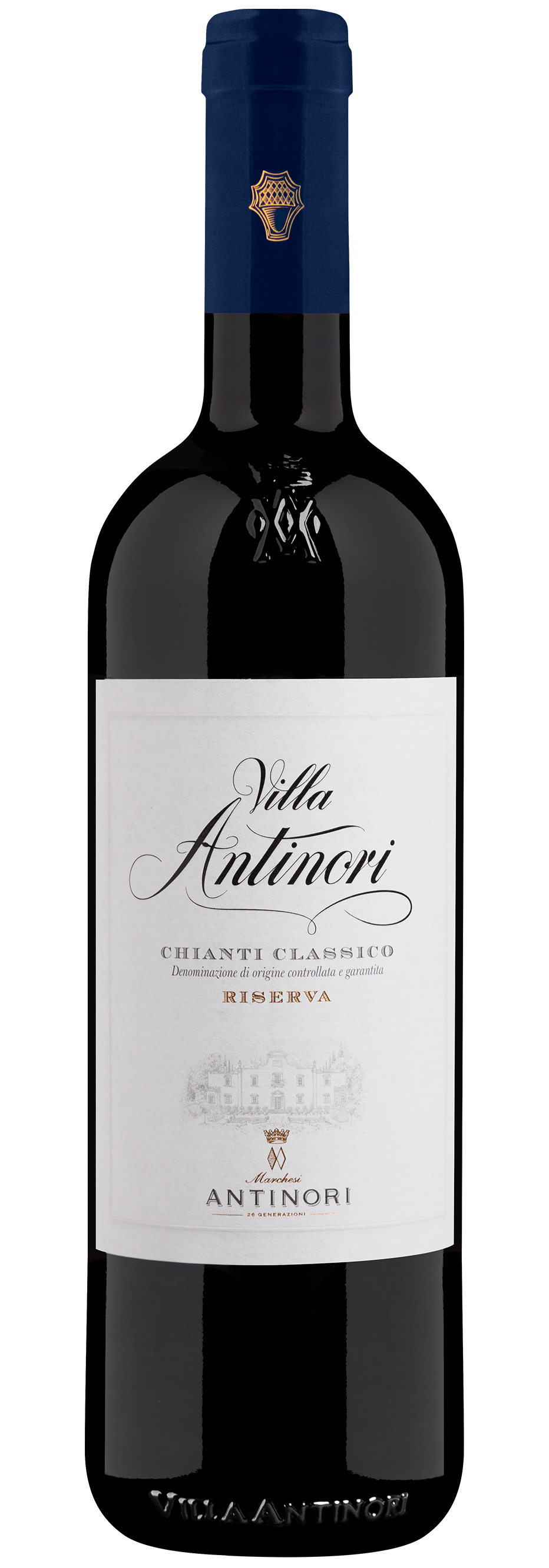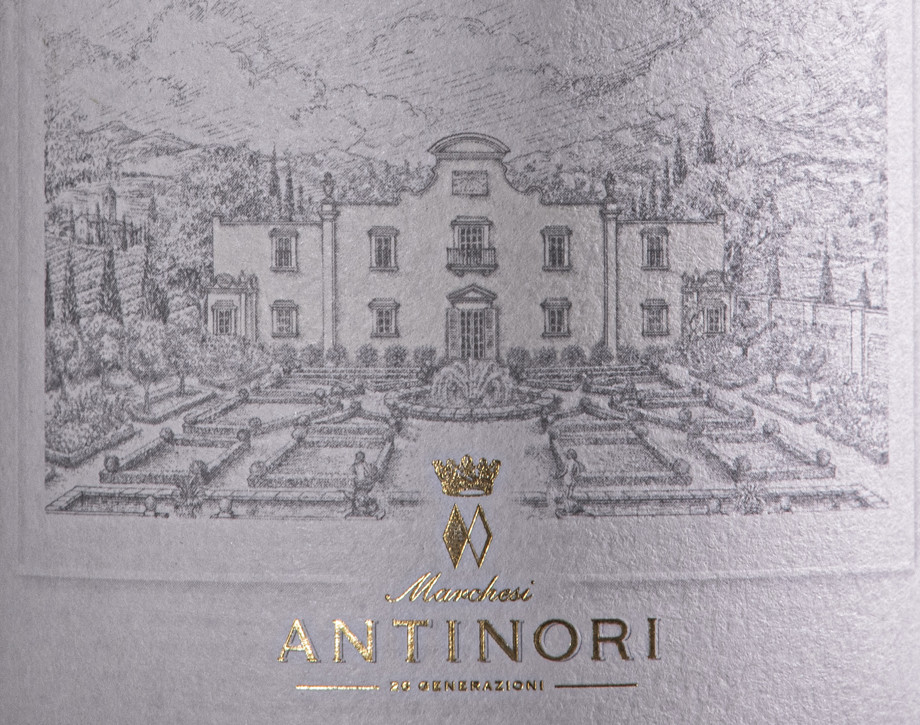Villa Antinori Chianti Classico Riserva

Climate
The autumn of 2009 and the winter of 2010 in the Chianti Classico production zone were characterized by frequent rain and, in addition to cold temperatures, by a series of snowstorms from late 2009 through the first half of March. This weather pattern favored an excellent period of repose for the vines which, together with the precipitations of early spring, led to a delay in budding compared to normal seasonal averages. The months of April, May, and June, critical for the growth and development of the plant, were characterized by substantial rainfall and by lower than average temperatures, to the point of causing a generalized delay in the cycle of the vine in all of the various grape varieties cultivated in the vineyard. The weather changed towards the end of July and in early August with the arrival of low temperatures along with three separate rainstorms, which again slowed down the growth and color change in the grapes. The very uneven course of the weather forced a careful and attentive thinning of crop aimed at lessening the size of the crop and selecting only the healthiest bunches for further development. Summer, which began in July with high temperatures and dry weather, contributed to an excellent development of the grape bunches and a recovery of the time lost earlier in the season. Harvesting operations began during the last ten days of September, a month which alternated warm, well ventilated, and sunny days with occasional rainstorms, at times somewhat intense but regularly followed by strong north winds which rapidly dried the grapes and the vineyard microclimate. During this period the Sangiovese grapes perfected their development thanks to warm days and cool evening and nights. This assisted the variety in completing its physiological ripening.
Vinification
The grapes were destemmed and given a light pressing, and the must and skins then went into temperature-controlled fermentation tanks. Fermentation began rapidly, and total skin contact lasted approximately twelve days with frequent pumping over the cap of skins, which was regularly moistened as well, in order to extract soft, ripe tannins. The wine was run off its skins and went into small barrels of French and Hungarian oak for an aging period which lasted twelve months, a period in which the wine was also put through a complete malolactic fermentation. Part of the wine was racked into oak casks in the springtime in order to further soften the tannins. The wine was bottled in early summer and given a few months of bottle aging before release.
Historical Data
Villa Antinori is, first and foremost, an idea, a way of conceiving the production of wine: on the one hand, experimentation and evolution, on the other hand, continuity in tradition. Sangiovese and other complementary grape varieties render their homage to an historic label and a wine with a long tradition,: this name, in fact, is almost one hundred years old, as the wine was produced for the first time in the 1928 vintage. With the inauguration of the Antinori Chianti Classico cellars, the family wished to reinterpret a Tuscan classic with a Riserva offering which is both delicate and, at the same time, elegant and decisive in flavor.
Tasting Notes
The 2010 Villa Rosso Chianti Classico Riserva is an intense ruby red in color. On the nose, the aromas are fruity and spicy. Light touches form the aging in oak underscore the notes of cherries and red berry fruit which are typical of the Sangiovese grape. The flavors of the wine are harmonious on the palate, the tannins balanced and ripe. The finish and aftertaste are dry, vibrant, and mineral in character, typically Chianti Classico.
Awards
Wine Advocate 90/100 USA

The Wine
Villa Antinori Chianti Classico Riserva is a blend of Sangiovese together with other complementary varieties produced as a tribute to Antinori’s historic label that has accompanied the family’s winemaking traditions over the years. The inauguration of the new winery Antinori nel Chianti Classico inspired the family to reinterpret this Tuscan classic into a premium quality wine with unmistakable style, the resulting Riserva is delicate, decisive and elegant.

Climate
The autumn of 2009 and the winter of 2010 in the Chianti Classico production zone were characterized by frequent rain and, in addition to cold temperatures, by a series of snowstorms from late 2009 through the first half of March. This weather pattern favored an excellent period of repose for the vines which, together with the precipitations of early spring, led to a delay in budding compared to normal seasonal averages. The months of April, May, and June, critical for the growth and development of the plant, were characterized by substantial rainfall and by lower than average temperatures, to the point of causing a generalized delay in the cycle of the vine in all of the various grape varieties cultivated in the vineyard. The weather changed towards the end of July and in early August with the arrival of low temperatures along with three separate rainstorms, which again slowed down the growth and color change in the grapes. The very uneven course of the weather forced a careful and attentive thinning of crop aimed at lessening the size of the crop and selecting only the healthiest bunches for further development. Summer, which began in July with high temperatures and dry weather, contributed to an excellent development of the grape bunches and a recovery of the time lost earlier in the season. Harvesting operations began during the last ten days of September, a month which alternated warm, well ventilated, and sunny days with occasional rainstorms, at times somewhat intense but regularly followed by strong north winds which rapidly dried the grapes and the vineyard microclimate. During this period the Sangiovese grapes perfected their development thanks to warm days and cool evening and nights. This assisted the variety in completing its physiological ripening.
Vinification
The grapes were destemmed and given a light pressing, and the must and skins then went into temperature-controlled fermentation tanks. Fermentation began rapidly, and total skin contact lasted approximately twelve days with frequent pumping over the cap of skins, which was regularly moistened as well, in order to extract soft, ripe tannins. The wine was run off its skins and went into small barrels of French and Hungarian oak for an aging period which lasted twelve months, a period in which the wine was also put through a complete malolactic fermentation. Part of the wine was racked into oak casks in the springtime in order to further soften the tannins. The wine was bottled in early summer and given a few months of bottle aging before release.
Historical Data
Villa Antinori is, first and foremost, an idea, a way of conceiving the production of wine: on the one hand, experimentation and evolution, on the other hand, continuity in tradition. Sangiovese and other complementary grape varieties render their homage to an historic label and a wine with a long tradition,: this name, in fact, is almost one hundred years old, as the wine was produced for the first time in the 1928 vintage. With the inauguration of the Antinori Chianti Classico cellars, the family wished to reinterpret a Tuscan classic with a Riserva offering which is both delicate and, at the same time, elegant and decisive in flavor.
Tasting Notes
The 2010 Villa Rosso Chianti Classico Riserva is an intense ruby red in color. On the nose, the aromas are fruity and spicy. Light touches form the aging in oak underscore the notes of cherries and red berry fruit which are typical of the Sangiovese grape. The flavors of the wine are harmonious on the palate, the tannins balanced and ripe. The finish and aftertaste are dry, vibrant, and mineral in character, typically Chianti Classico.
Awards
Wine Advocate 90/100 USA

Villa Antinori
Villa Antinori is an important corner stone as its name is associated with over 100 years of history. At the same time it represents ongoing progress. The one essential principle is continuous research for increasingly higher quality standards. This idea produced two different wines that share a common passion for quality: Villa Antinori Rosso and Villa Antinori Bianco. Villa Antinori was originally produced in 1928 by Marchese Niccolò Antinori as a Chianti Classico that could age and that would improve over time. Soon after, Villa Antinori was found in the most prestigious cellars in embassies, royal houses, important hotels and restaurants. In 1931, Villa Antinori Bianco was made from traditional Trebbiano grapes. In the 1980’s a small percentage of Chardonnay was added in order to give the wine better structure.


















